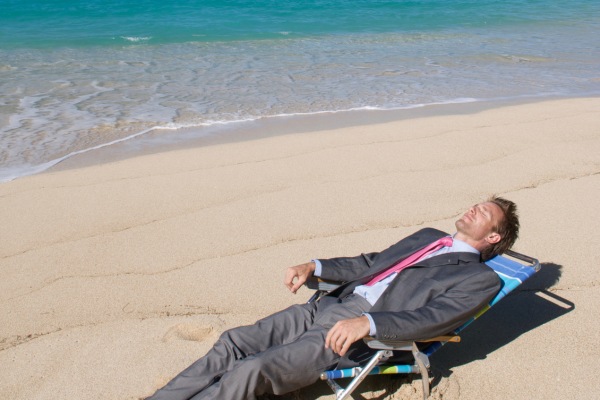
All the best guides to writing articles say “never start with an apology”. But I fear I need to do just that this week. That’s because after receiving my article last Saturday, several people got in touch saying they I had scared them. Last week I was talking about the end of the digital world as we know it. So, I am sorry if it frightened you.
By way of apology, please accept this week’s newsletter as an offer of something you can do to improve your life and business. I am giving you permission to have a daily siesta. Well, almost.
“Siesta” means “the sixth hour” and it is supposedly the break you take having been at work for five hours. I suspect that, like me, you’ve been on holiday abroad and found the shops shut at the hottest part of the day for the daily “siesta time”. All the locals are sensibly out of the heat while the mad dogs and the English are sweating away, trying to enjoy themselves in the sunshine.
It is clearly sensible for countries affected by hot early afternoon temperatures to take a break. Nobody can work in the heat anyway, so what is the point of businesses remaining open?
But what about if you are not in a tropical country? What if you are “enjoying” the British summer of grey skies, rain and only the occasional sunny day? Surely we shouldn’t be taking time off in the afternoon?
Well, maybe we need to reconsider this. That’s because research from the University of Texas was published recently that showed the afternoons are not good for business. The study looked at how many words were typed, how many clicks were made, how far the mouse travelled, and the extent of typographical errors. The research shows that we make many more keyboard mistakes in the afternoons.
Typographical errors can be important. For example, if you type “can” instead of “can’t” you reverse the meaning of what you wanted to say. Oops…! Similarly, type “agree” instead of “disagree” and you can find yourself in hot water…!
Miscommunication in the workplace is common. Yesterday, I was running a session with first-year undergraduate students on the psychology of perception and communication. I got them to do a couple of exercises, including changing a word in a sentence which would significantly alter the meaning of what they were saying to one another. There were sounds of “aah” all around the room, as it became clear how easy it was to send the wrong message.
I’d hazard a guess that, like me, you have worked in places where the wrong message “got out”. Reports may have had typographical errors in them leading to actions that were unintended. Or, worse still, customers received emails or letters that caused significant problems due to some typing error in them.
The recent research from Texas would imply that many of these mistakes would have happened in the afternoon. Plus the research showed that the worst afternoon of the week is a Friday. Indeed, we make loads of computer errors on a Friday, even though that’s the day of the week we do less typing. Proportionally, Fridays are full of keyboard mistakes compared with the rest of the week.
What the study really shows is that we make keyboard errors when we are tired. Well, there’s a surprise…! Mid-afternoon your body has a “dip” when your sugar levels are low and your digestive system is using all your energy to process lunch. A siesta at this time is ideal. You can take a break while your body deals with digestive matters. You can then return to the desk a couple of hours later, refreshed and less tired, leading to fewer keyboard mistakes and thereby a reduced chance of miscommunication.
However, I suspect you might say you cannot take a couple of hours away from the desk in the early afternoon. What you can do instead is take a “siesta” away from the keyboard. Do all your important typing in the morning. Leave the early afternoon, at least, to things where making mistakes might not be such an issue. For instance, you could use the couple of hours after lunch to do the less important tasks, like catching up on some reading, or starting to plan out ideas for new projects. You could even schedule office meetings for this time of day so that you can share the load with other people. If you are a little tired post-lunch, others can help “take the strain” in the meeting. It’s a kind of “shared siesta”.
Planning what we do with our time in the day Is not the same as planning the tasks themselves. Many people I know have a good plan of what to do and when to do it. But they don’t always take into consideration when is the best time to do each of the activities. For example, rather than spending three hours on a project, it might be a good idea to spend an hour this afternoon planning it and then two hours tomorrow morning to write the report. That way, you will make fewer keyboard errors. OK, I know, I didn’t quite manage to argue for a complete siesta for you each day. But I hope I did help trigger some thoughts as to when you do certain tasks in the day so that you reduce errors and mistakes. That way your communication at work will be improved meaning less stress and more happiness.

